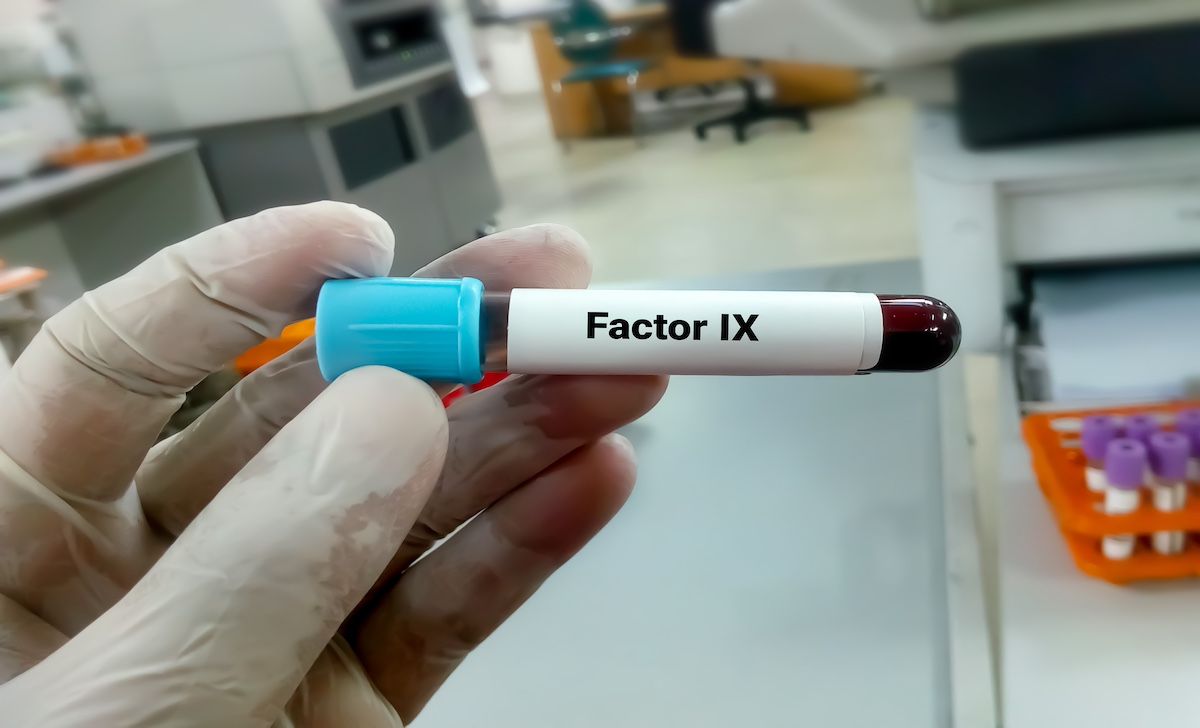News
Article
Field Study Highlights Differences in Factor IX Variant Lab Results
Author(s):
Different types of assays led to different results in measures of factor IX variant FIX-R338L, the authors found.
A new field study could help clinicians better interpret laboratory measurements of high-activity factor IX (FIX) variant FIX-R338L in patients with hemophilia B.
The findings are important as drug developers continue to make advancements in the treatment of hemophilia.
For the present analysis, samples were used from patients who received fidanacogene elaparvovec as part of a phase 1/2a clinical trial | Image Credit: Saiful52-stock.adobe.com

People with hemophilia B benefit from prophylaxis with FIX replacement therapies, but many patients do not fully adhere to their prophylactic treatment plans due to the burdens associated with the intravenous infusions of the therapies, wrote the study authors in Thrombosis and Haemostasis.1 The development of newer therapies for hemophilia B, such as the gene therapy fidanacogene elaparvovec (Beqvez; Pfizer), could potentially improve outcomes and reduce the need for prophylaxis, the authors said. Fidanacogene elaparvovec is an adeno-associated virus-based gene therapy vector that expresses FIX-R338L.
Yet, the authors said the success of such therapies, and patient monitoring in general, is reliant upon the ability to accurately measure FIX activity in patients with hemophilia B. Both one-stage (OS) clotting assays and chromogenic substrate (CS) assays can measure FIX activity, but the latter have not received FDA approval, and thus are less commonly used, they said. However, previous reports have suggested there is significant variability in FIX activity results between OS assays conducted with different reagents and between OS and CS assays, the authors noted.
For example, a 2018 study in the International Journal of Laboratory Hematology found “considerable interlaboratory variability” in results from OS assays, and suggested that CS assays were likely to be superior in certain clinical scenarios.2
The authors also said differences between the wild-type factor plasma protein used as an assay standard and the endogenously expressed transgene protein may make it harder to accurately interpret factor activity levels.
Because of these and other challenges, the World Federation of Hemophilia has called for more research to better understand the relative accuracy of different assays.
In the new report, the investigators conducted a multisite international field study at a central laboratory and at 18 local laboratories. The labs used samples from patients who received fidanacogene elaparvovec as part of a phase 1/2a clinical trial.
The labs tested FIX-R338L activity using OS and CS assays. They also analyzed activated FIX (FIXa) activity using a chromogenic assay. Finally, they assessed FIX activity following the use of exogenous FIX products. All of the laboratories used standardized protocols, reagents, and instrumentation.
The investigators found that FIX-R338L activity was consistently higher in OS silica-based assays compared with both OS ellagic acid-based assays and chromogenic assays. The variation was most pronounced at the lowest FIX activity levels, they said. The authors said they found a similar trend when using wild-type FIX, although they said the range of variance was smaller in the wild-type samples than with FIX-R338L. However, they also said the results were consistent across laboratories, “suggesting the variation lies within the reagent activation stage rather than a user variation.”
FIXa, which could lead to an overestimation of FIX activity, the authors added, was not detected in the samples, “indicating that it was not contributing to the OS assay differences.”
Lastly, when investigators spiked replacement FIX products into patient samples, they found the exogenous FIX was additive to endogenous FIX-R338L. This shows “that established correction calculations can be leveraged for recipients of FIX-R338L gene therapy who need replacement FIX infusion,” they explained.
The investigators said they hope their findings help shed light on prior research and explain variances observed in laboratory testing. They said these data could also be used to help establish best practices for testing and monitoring patients.
“Clinicians assessing patients who have received gene therapy with the FIX-R338L variant may find it helpful to familiarize themselves with the different OS and CS assays available to assess FIX activity and contextualize the results for patient management,” they concluded.
References
1. Pittman DD, Carrieri C, Soares H, et al. Field study and correlative studies of factor ix variant FIX-R338L in participants treated with fidanacogene elaparvovec. Thromb Haemost. Published online June 11, 2024. doi:10.1055/s-0044-1787734
2. Adcock DM, Strandberg K, Shima M, Marlar RA. Advantages, disadvantages and optimization of one-stage and chromogenic factor activity assays in haemophilia A and B. Int J Lab Hematol. 2018;40(6):621-629. doi:10.1111/ijlh.12877




